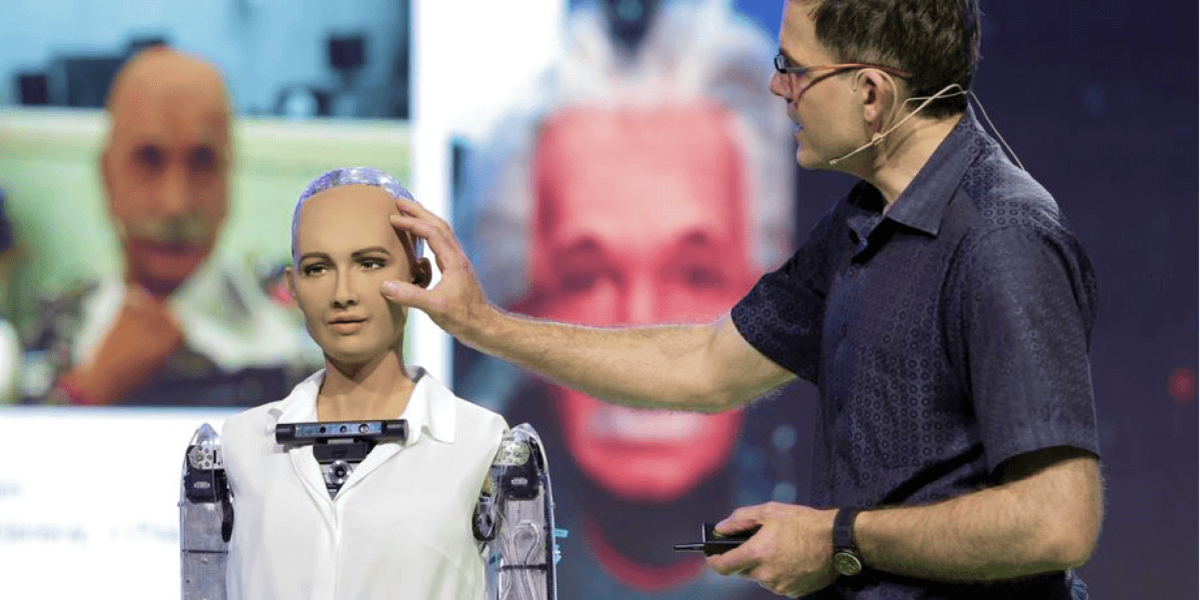Siri, Alexa, self-driving cars, conversation chatbots, and even Netflix recommendations are all examples of artificial intelligence systems in today's world. Dota 2 is a top-rated game with a World Championship total prize pool of 45 million US dollars for 2022. Open AI, a company supported by Elon Musk, encoded a machine learning software that defeated many of the greatest Dota 2 players with decades of experience in as short as a couple of weeks. This proves how amazing and efficient AI algorithms are. Many corporations like Google and Facebook are working on their own complex AI systems, solving different types of machine learning problems and developing new algorithms. Current uses of artificial intelligence are so diverse that it gets a little tricky to define where or which sector they belong to. In order to get a better understanding of artificial intelligence use cases, we first need to clarify what AI itself is.

What is artificial intelligence?
As Andrew Ng once put it, "AI is the new electricity." Though there's no single definition to the term AI, it is often presented as a subfield of computer science and machine learning that aims at developing algorithms and models in a way that mimics the human way of thinking.
Why analyze AI use cases?
AI and machine learning are rapidly expanding and evolving, with new applications and use cases being discovered every day. It can be difficult to keep track of all the different ways that AI can be used, but it's important to understand the potential implications for your business. Exploring the top use cases in AI can help individuals and organizations design their development plan, adjust to the fast-changing trends and find answers to these questions:
- What are the top AI use cases, and what companies stand behind them?
- How is AI applicable for different industry-specific use cases?
- What's the revenue potential on given AI use cases?
At SuperAnnotate, we truly believe that AI, machine learning, and computer vision transform the world and help us make it a better place; that's why we're deeply invested in researching and introducing AI use cases in different industries.
This post will cover more industries fueled by artificial intelligence technologies.
AI in banking and finance
The adoption of AI solutions in banking has grown more common. According to the report "The impact of artificial intelligence in the banking sector & how AI is being used in 2022", the majority of financial service companies say they've implemented the technology in business domains like risk management (56%) and revenue generation through new products and processes (52%). So what are the examples of AI applications in the financial sector?

Automation
AI enables organizations to cut operational costs and boost productivity for repetitive tasks such as report generation and mortgage processing. Further, AI-powered chatbots significantly impact ROI making them one of the most widely deployed AI applications across the banking industry. Successfully handling routine tasks such as balance inquiries or viewing statements, these chatbots help minimize the load of the call centers and online banking.
Credit decision making
Many AI-powered solutions help banks assess potential borrowers by analyzing historical data and calculating various factors. With a robust credit scoring model, lenders are able to develop innovative lending systems even for individuals or entities with limited credit history.
Fraud detection
Being highly prone to fraudulent transactions, banking and financial institutions need reliable systems to detect and prevent these in a timely manner. Unfortunately, however attentive, human employees are unable to supervise all the transactions and manage malicious content or suspicious payments. Machine learning algorithms, on the other hand, can examine hundreds of data points in real-time and identify questionable or fraudulent transactions.
AI in supply chain
A supply chain is a process of taking an item from raw materials into a finished product with many middlemen along the way. For example, anything we order online goes through a supply chain with manufacturers, distributors, drivers, shipments, etc. All these steps are typically managed by different companies, requiring armies of expensive planners and complex engineers. Below are a few examples of AI applications in the supply chain.

Demand estimation
AI-powered solutions allow warehouse managers to track inventory levels in real-time, as well as follow the information about raw materials and finished goods. Besides, using historical data, AI models can calculate the demand and produce recommendations for upcoming collections based on production orders, purchase orders, and supplier deliveries.
Warehouse management
Managing inventory in a warehouse is associated with chaos and rush. Besides, increasing labor costs and employee shortage is a real challenge to recruit, train, and retain human workers. Robots and automated AI machines perfectly fill in this gap and help maintain a safe workspace, increase warehouse productivity and reduce inventory management costs. AI machines, such as robotic arms, follow-me bots, goods-to-person (GTP) solutions, are commonly used for various fulfillment processes, including selection, physical pick, and place, as well as product movement across the warehouse.
Route optimization
Companies with unarranged delivery logistics risk falling behind in the highly competitive online shopping and delivery market. Customers are used to fast and accurate shipping, and they readily turn to other suppliers when a company doesn't meet their delivery expectations. Therefore, AI-driven route optimization platforms and GPS tools are vital nowadays as they allow for a flexible and robust route analysis and best option suggestion.
AI in robotics
In the modern world, the fields of AI and robotics often overlap. AI-powered robotics is undoubtedly one of the most rapidly developing branches that aim at designing efficient solutions for various industries, including healthcare, manufacturing, retail, and more.

The history of robotics dates long back, but as technology evolves, robots are becoming more sophisticated in terms of structure and complex tasks they're able to perform. The advancements of wireless technology, programming, semiconductors, and sensors gave rise to so-called humanoid robots who're able to complete dangerous work and access hazardous places, help disabled people, engage in daily routine, and much more. The most famous example of a humanoid robot is Sophia, developed by the Hong Kong-based company Hanson Robotics.
Because we primarily specialize in computer vision, we suggest you check out the use cases of computer vision in robotics that cover real-life applications and current AI challenges in the robotics industry.
AI in education
Many people mistakenly assume that AI is there to replace teachers, but that's far from what we see now in reality. Teaching with AI systems and machine learning may be more effective since these are built to have unbiased opinions about the world around us. A hybrid model of assisted AI teaching may provide a compromise between two extremities of traditional and entirely AI-based learning. Here are some benefits of AI-assisted education.

Personalized learning
AI can personalize classes and learning tactics for individual students, considering their knowledge gaps and exercise preferences. Popular examples of AI in education include different learning apps, such as Duolingo or Bubble for language learning. These apps aim to identify areas you're not good at, customize students' learning pace, and suggest support where they need it. Personalized education based on AI adapts to particular requirements and discovers students' most effective learning patterns.
Accessibility
Unfortunately, conventional classroom teaching is not available or functional for many students with learning disabilities and those requiring special needs. Real-time captioning AI solutions, for example, are a great learning source for deaf or hard-of-hearing students. Some of these systems are so well-trained they automatically remove disfluencies and add punctuation. In their project AI for accessibility, Microsoft shares some functional AI use cases in education.
Administrative management
Education goes beyond classroom teaching. Teachers, professors, lab assistants have a lot of administrative tasks that are repetitive, often distracting, and time-consuming. Grading, test assessment, checking assignments or multiple-choice tests, and responding to FAQs are tasks that AI, precisely NLP systems, can execute to unburden the teachers.
Wrapping up AI use cases
Now you're familiar with some of the most common uses of AI in the pillar industries. Sure enough, the uses of artificial intelligence today scratch far beyond the limits of this article. The truth is we gradually become so used to AI we may not even notice it when working or enjoying our leisure time. However, studying machine learning use cases is essential for both businesses and individuals to discover potential growth areas.
If you're further interested in the topic, we suggest checking out real-life use cases of image annotation to learn more about how computer vision optimizes commercial and business sectors.









